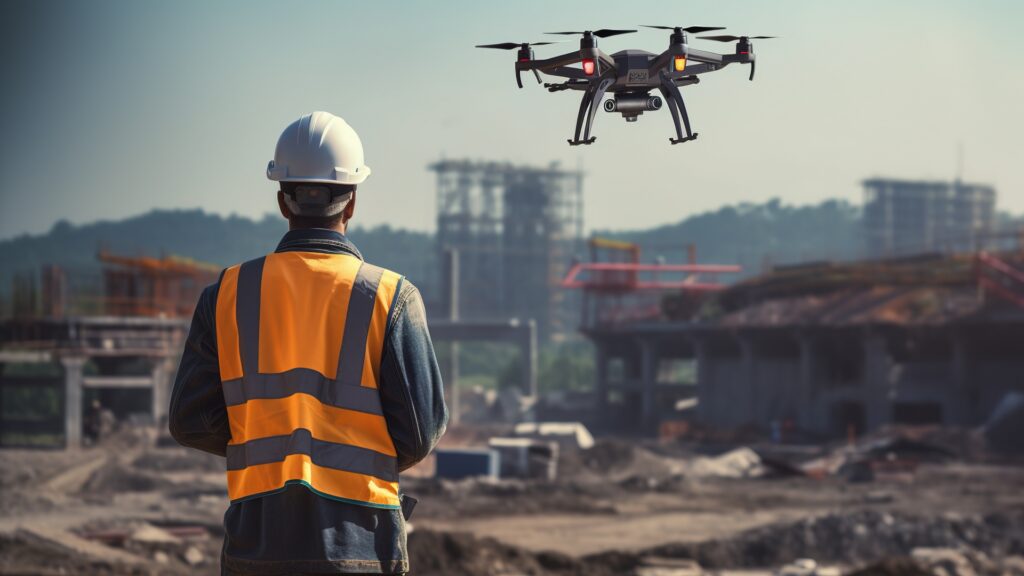Behind impressive infrastructure projects lies frustrated teams wrestling with inefficient systems begging for solutions. Construction leaders nurse headaches from disjointed communication channels, delayed materials, missed milestones and overworked staff. Teams power forward through sheer human will alone, yet lingering coordination challenges seem rooted stubbornly to the ground.
But what if it didn’t have to be this way? What if you could build faster, safer, and smoother? Enter digital transformation – a practical toolkit to turn your operation into a streamlined powerhouse. This post will crack open the toolbox and show you how to leverage powerful tech to build the future of construction, brick by data-driven brick. In addition, you can explore the best apps for contractors to get your job done well. Prepare for a significant transformation, as the revolution is here to reshape your world.
The Current Landscape Of Construction Operations
Despite its significant impact on shaping the world, the construction industry grapples with a harsh reality: inefficiency. While it showcases remarkable engineering and architectural achievements, its internal processes frequently fall behind. Here’s a glimpse into its current landscape:
Fragmented communication – Disjointed workflows often hamper collaboration. Architects work in one corner, engineers in another, and construction teams struggle to keep up with evolving plans, leading to costly delays and rework.
Data disconnect – Vital project information gets trapped in disparate software systems, spreadsheets, and physical documents, obscuring insights and hindering informed decision-making.
Safety Shortcomings: Manual tasks and information gaps contribute to a concerning rate of accidents and injuries in the industry. This human cost demands immediate attention and innovative solutions.
Yet, a positive transformation is underway in the face of these challenges. Forward-thinking companies are progressively adopting digital tools and technologies, strategically setting the stage for a more intelligent, efficient, and profitable future.
Technological Solutions For Efficient Construction
Here are some impactful solutions paving the way for a transformed landscape:
Building Information Modeling (BIM) – This 3D representation fosters collaboration by enabling architects, engineers, and builders to visualize design elements, identify potential clashes, and optimize sequencing within a single platform.
Internet of Things (IoT) – Imagine a network of intelligent sensors embedded throughout the site, whispering valuable data about material usage, equipment health, and environmental conditions. This scenario is the power of IoT – real-time information empowers informed decision-making, enhancing resource optimization, predictive maintenance, and proactive risk mitigation.
Drones and robotics – Drones with high-resolution cameras deliver precise 3D mapping and terrain analysis, streamlining progress monitoring and safety assessments. Robotics further automates repetitive tasks, from bricklaying to welding, enhancing accuracy and consistency while reducing potential human error and fatigue.
Software Solutions – Project management software consolidates tasks, schedules, and documents, facilitating real-time collaboration and transparent information sharing. Connectivity platforms link geographically dispersed teams, enabling instantaneous decision-making and collaborative problem-solving.
By embracing these solutions, companies can unlock significant productivity, safety, and communication gains, laying the foundation for a future where productivity and innovation go together.
Benefits Of Digital Transformation In Construction
By embracing technological transformation, companies can reap many benefits, paving the way for a more efficient, sustainable, and resilient future.
Enhanced efficiency and productivity – Digital tools like BIM provide a single, centralized data hub, fostering streamlined communication and clash detection, leading to fewer errors and faster turnaround times. Automated processes, powered by drones and robotics, further bolster capability, reducing manual labor and human fatigue.
Improved collaboration and communication – Collaboration platforms connect architects, engineers, and builders in real time, enabling instantaneous decision-making and collaborative problem-solving. Project management software is a central hub, ensuring unified understanding among all stakeholders.
Elevated safety standards – Digital tools offer innovative solutions to mitigate risks and protect workers. Real-time data gathered by IoT sensors enables proactive equipment maintenance, preventing potentially hazardous failures. Drones conduct remote inspections of dangerous areas, minimizing human exposure to risks.
Enhanced competitiveness and market advantage – Companies that adopt this strategy gain a competitive edge by delivering projects faster, on budget, and with demonstrably better safety records. Increased competence and productivity translate into cost savings, enabling more competitive bids and attracting new clients.
Unlocking the vast potential of these technologies means companies can build better, faster, safer and contribute to a more resilient and environmentally conscious world.
Conclusion
Behind impressive infrastructure projects lie teams hampered by fragmented systems and tedious processes. Yet the promise of digital transformation glimmers—empowering managers with data insights, automating tedious tasks, and equipping teams to build rather than administrate. This potential for optimized efficiency, sustainability and collaboration awaits. Are you ready to build the future using technology?

























